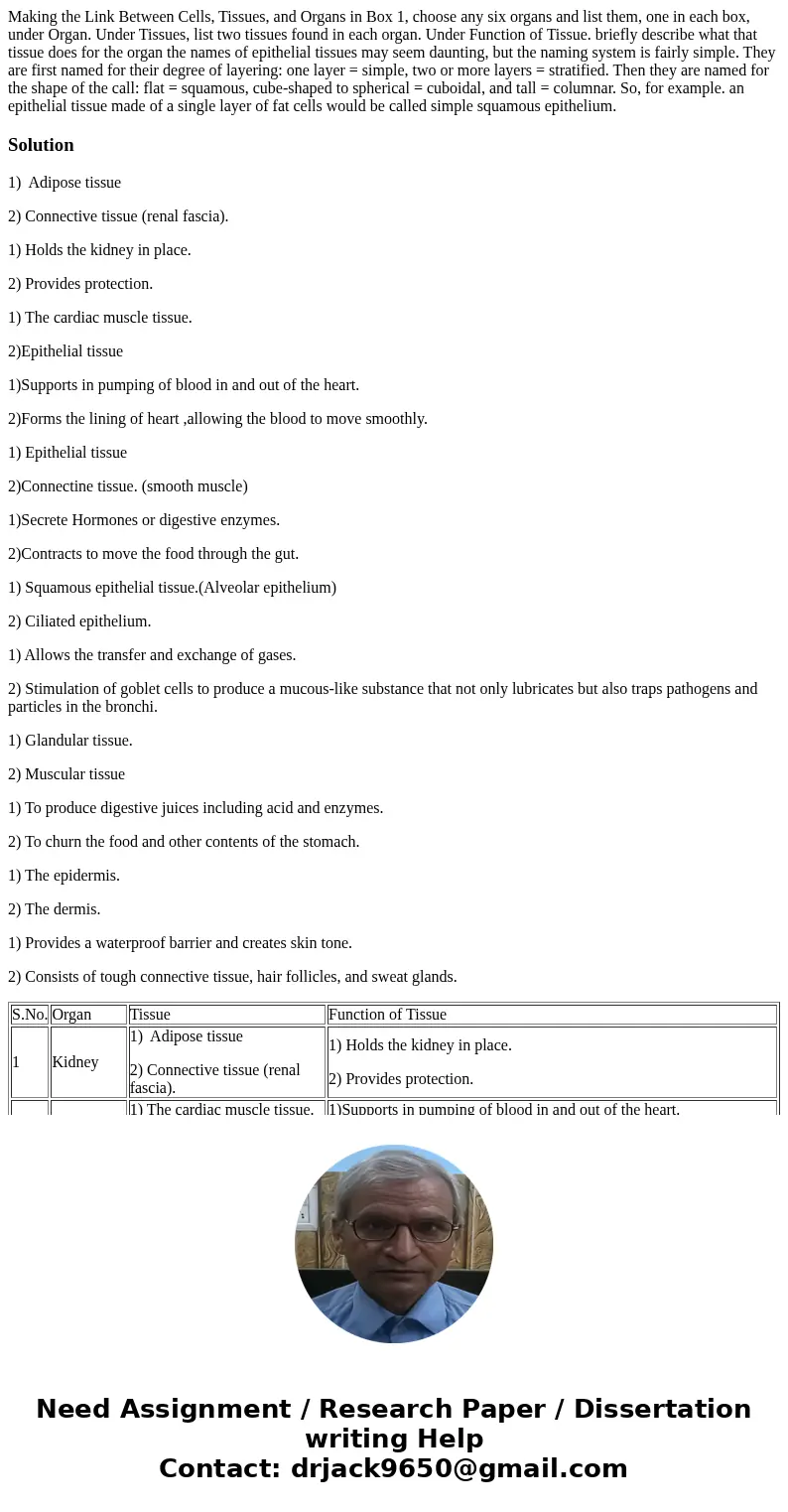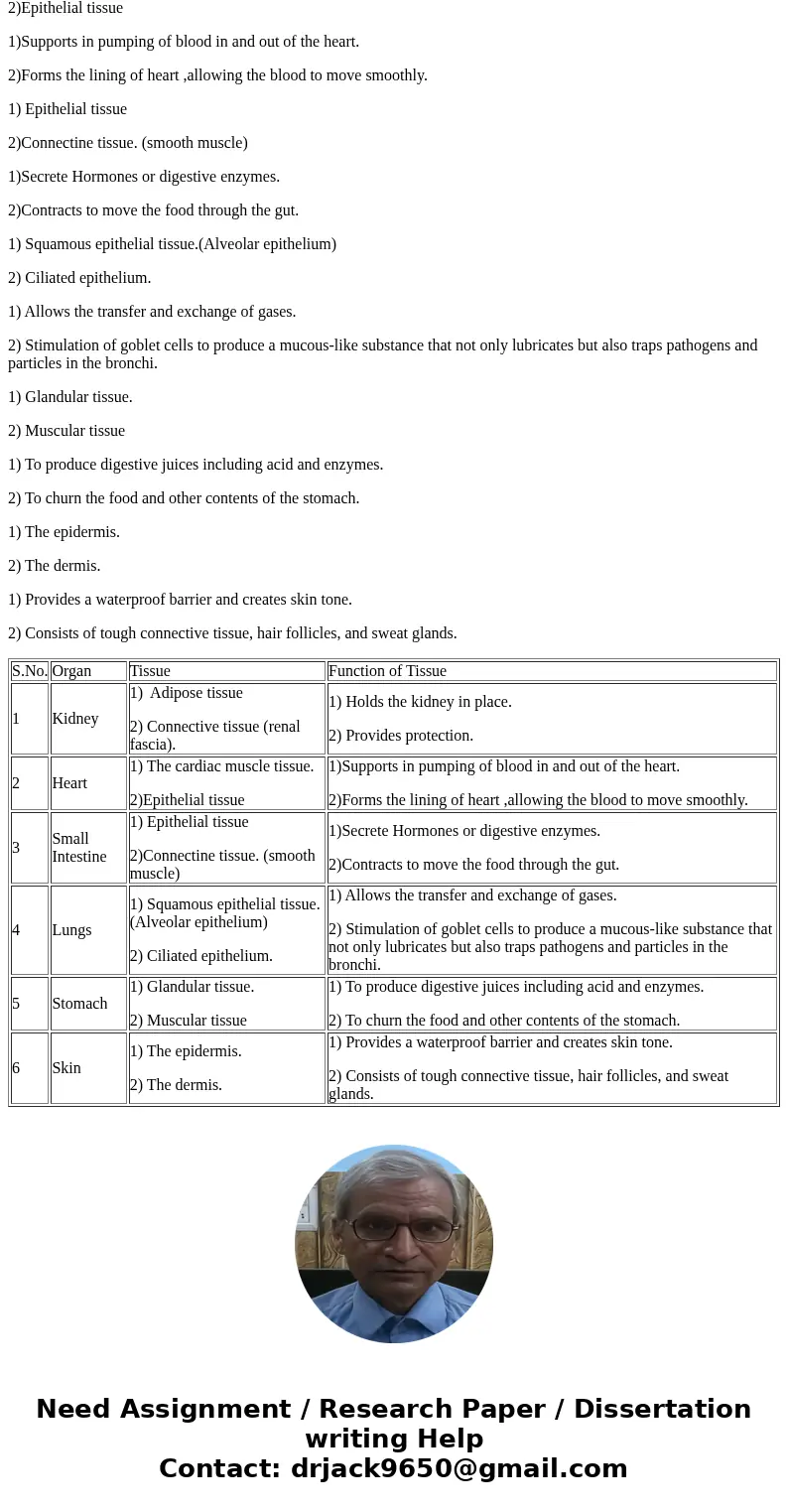Making the Link Between Cells Tissues and Organs in Box 1 ch
Solution
1) Adipose tissue
2) Connective tissue (renal fascia).
1) Holds the kidney in place.
2) Provides protection.
1) The cardiac muscle tissue.
2)Epithelial tissue
1)Supports in pumping of blood in and out of the heart.
2)Forms the lining of heart ,allowing the blood to move smoothly.
1) Epithelial tissue
2)Connectine tissue. (smooth muscle)
1)Secrete Hormones or digestive enzymes.
2)Contracts to move the food through the gut.
1) Squamous epithelial tissue.(Alveolar epithelium)
2) Ciliated epithelium.
1) Allows the transfer and exchange of gases.
2) Stimulation of goblet cells to produce a mucous-like substance that not only lubricates but also traps pathogens and particles in the bronchi.
1) Glandular tissue.
2) Muscular tissue
1) To produce digestive juices including acid and enzymes.
2) To churn the food and other contents of the stomach.
1) The epidermis.
2) The dermis.
1) Provides a waterproof barrier and creates skin tone.
2) Consists of tough connective tissue, hair follicles, and sweat glands.
| S.No. | Organ | Tissue | Function of Tissue |
| 1 | Kidney | 1) Adipose tissue 2) Connective tissue (renal fascia). | 1) Holds the kidney in place. 2) Provides protection. |
| 2 | Heart | 1) The cardiac muscle tissue. 2)Epithelial tissue | 1)Supports in pumping of blood in and out of the heart. 2)Forms the lining of heart ,allowing the blood to move smoothly. |
| 3 | Small Intestine | 1) Epithelial tissue 2)Connectine tissue. (smooth muscle) | 1)Secrete Hormones or digestive enzymes. 2)Contracts to move the food through the gut. |
| 4 | Lungs | 1) Squamous epithelial tissue.(Alveolar epithelium) 2) Ciliated epithelium. | 1) Allows the transfer and exchange of gases. 2) Stimulation of goblet cells to produce a mucous-like substance that not only lubricates but also traps pathogens and particles in the bronchi. |
| 5 | Stomach | 1) Glandular tissue. 2) Muscular tissue | 1) To produce digestive juices including acid and enzymes. 2) To churn the food and other contents of the stomach. |
| 6 | Skin | 1) The epidermis. 2) The dermis. | 1) Provides a waterproof barrier and creates skin tone. 2) Consists of tough connective tissue, hair follicles, and sweat glands. |


 Homework Sourse
Homework Sourse